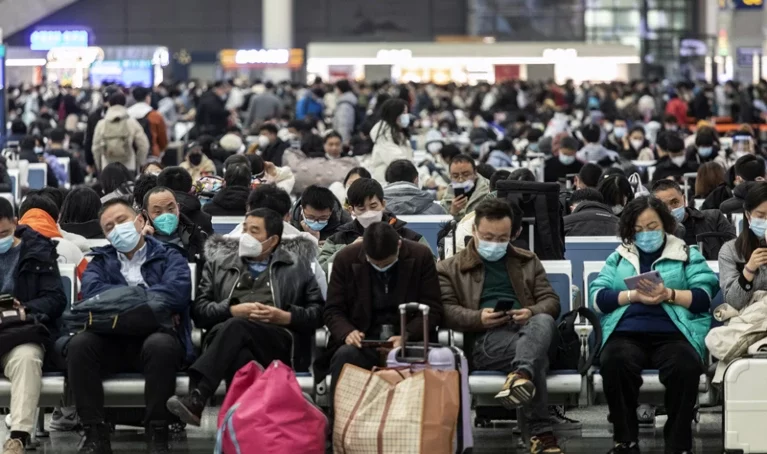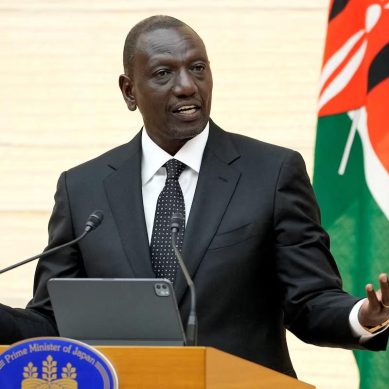
Up to one million people in China could die from Covid-19 over the next few months, according to some of the first projections since the government lifted many of its strict ‘zero-Covids-19’ measures.
“There’s no doubt that China is in for a bad couple of months,” says James Wood, an infectious-disease modeller at the University of New South Wales in Sydney, Australia.
However, two studies find that the number of deaths could be reduced by giving most of the population a fourth vaccine dose, combined with a high level of adherence to masking and reimposition of temporary restrictions on social interactions when death rates surge. These measures could also ease the burden on hospitals.
“It is never too late to flatten the curve,” says Xi Chen, an economist at Yale University in New Haven, Connecticut, who studies China’s public-health system.
Over the past month, the Chinese government has dismantled many of the restrictions it imposed to quash the virus’s spread. It has ended the mass lockdown of entire cities, lifted restrictions on travel within and between regions and allowed people infected with SARS-CoV-2 to isolate at home instead of in centralised facilities.
Testing is now voluntary, and last week, the National Health Commission announced that it will stop reporting the number of infected people who have no symptoms.
Officially, the number of reported cases has been dropping since late November because of the changes in testing requirements, but there are indications that infections in some regions are rising. Beijing, for example, is facing a rapid growth in infections, according to Chinese state media agency Xinhua.
One of the studies, posted as a preprint without peer review on December 11, uses data from recent outbreaks in Hong Kong and Shanghai to compare different scenarios in China. It finds that hospitals will be overwhelmed if infections rise as rapidly as expected because of the latest easing of restrictions. This will probably result in about one million deaths over the next few months, the study forecasts.
But these estimates include only deaths due directly to Covid-19, and do not take into account excess deaths because of delays in treating people with non-Covid-19 diseases, says Ewan Cameron, a modeller at the Telethon Kids Institute in Perth, Australia.
The study suggests that if 85 pe cent of the population gets a fourth dose of a vaccine other than the inactivated-virus vaccines most people in the country have received, it could slow the rise in infections and reduce the number of severe infections and deaths. Pushing fourth vaccine doses, combined with giving antiviral drugs to people aged 60 and older and to other individuals at high-risk of developing severe disease, could reduce deaths by up to 35 per cent.
“It is really critical for China to achieve the highest vaccination coverage possible in the period immediately before the major epidemic takes off,” says James Trauer, an infectious-disease modeller at Monash University in Melbourne, Australia. He also notes that there is still a lot of uncertainty around the projections about the epidemic’s toll and the impact of measures to slow the spread.
On December 13, the government announced that people aged 60 and older and other high-risk groups, should get a fourth dose of vaccine, preferably one based on a different technology from their primary dose. But of the more than 260 million people in China older than 60, only 70per cent aged 60 and older, and only 40 per cent aged 80 and more, have received a third dose.
Wood notes that it might already be too late for China to benefit from fourth doses because there is already widespread transmission now that many restrictions have been lifted. He is also “not convinced an extra dose will make a big difference to transmission”, because circulating Omicron variants of the virus show a strong ability to evade the body’s immune response.
Another model estimates that China will face a Covid-19 death toll of half a million people by April, with 1.6 million deaths by the end of 2023, if the country continues on its current path. The model tracks and forecasts the global burden of Covid-19, and is developed and updated regularly by the Institute for Health Metrics and Evaluation at the University of Washington, Seattle.
Deaths in China could rise to close to 9,000 a day by the end of March, says Ali Mokdad, an epidemiologist at the institute.
The model forecasts that the total number of deaths could be reduced to around 290,000 between now and April if China brings in certain measures when the death rate passes a certain threshold. These involve reimposing restrictions, high rates of third- and fourth-dose vaccination and high antiviral drug treatment for at-risk groups.
Widespread mask use could reduce deaths still further, to around 230,000. Adherence to masking is high in China, and the eased restrictions have led to changes in behaviour in which people are choosing to restrict their movement, says Mokdad. “They will not [let it] rip.”
The two studies broadly agree on mortality estimates and the impact of interventions, says Cameron. “This similarity in large part reflects an agreement that herd immunity will only be achieved after a large, and difficult to contain, spread of transmission throughout the entire country.”
- A Nature report











